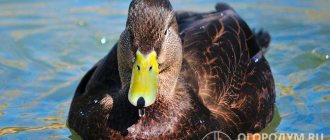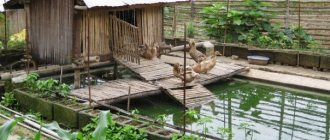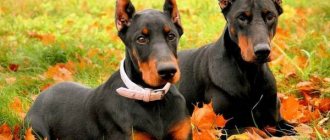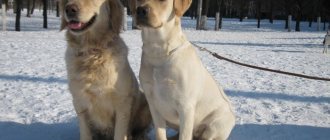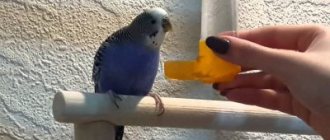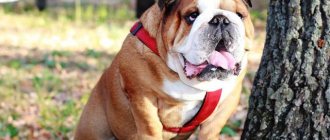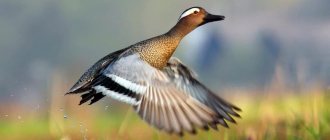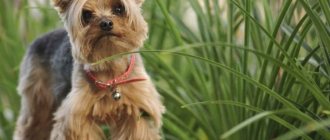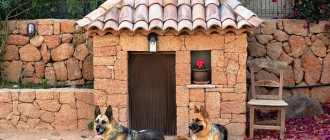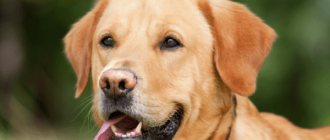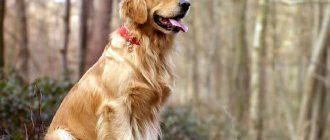Among the many feathered waterfowl, these beauties are especially noticeable. They have not only black plumage, but also white parts that stand out against this background - the beak or breast. What is the peculiarity of these birds, which of them can be tamed, and which cannot be domesticated? Where and how do black ducks live? What do they eat and how do they reproduce ? How to properly breed and care for black ducks? Let's take a look at these extraordinarily beautiful creatures today.
Let's start with the fact that these waterfowl are distinguished into two types: black ducks with a white beak and black ducks with a white breast. Their plumage, the color of a raven's wing, attracts many glances; you can often see these beauties in the paintings of famous and not so famous artists...
Black white breasted
White-breasted beauties of the meat-egg direction combined the best features of the Ukrainian gray, Peking breeds, as well as khaki-Campbell, which happened thanks to the efforts of Ukrainian breeders of the poultry farming institute. These ducks quickly gain weight, reaching a maximum of 4.5 kg, lay up to 150 eggs, which weigh about 100 g. After six months, puberty and the ability to reproduce occur.
Representatives of the breed look like this:
- black plumage covers the head and body, leaving only a white island of the sternum; drakes are distinguished by a greenish tint to the neck, which shimmers in sunlight;
- legs short, black;
- the wings have a small span;
- short tail;
- beak and eye color black;
- the head is small, the body is large.
The diet of black ducks consists of wheat, corn, barley, fish and meat and bone meal, milk powder, salt, legumes, wheat bran, meal, vitamins, and herbs. They are not too picky about food, but to obtain the desired result it is necessary to ensure the supply of vital substances with food.
Small chicks are fed crushed boiled eggs, cottage cheese, barley and oatmeal. From day 5, greens are chopped, and from day 10, they are fed boiled potatoes, which make up half of the entire meal. The food is divided into 5 feedings, then reduced to 3.
The birds are kept in a poultry house, which is divided into separate sections, between which it is easy for them to move. A bedding of sawdust or hay with a thickness of 10 centimeters is laid on the floor. Ducks are heat-loving creatures, so the temperature in their housing is maintained at 18 degrees Celsius. An important role is also played by proper ventilation, which will provide fresh air and avoid harmful drafts.
For breeding, one male weighing more than 2.7 kg is left for 5-6 ducks weighing at least 2.5 kg. For successful incubation, eggs of the correct shape, clean, undamaged, from females older than 26 weeks are suitable. They are collected throughout the week.
In a natural way, the hen hatches up to 15 ducklings. Using an ovoscope, eggs are examined and unsuitable ones are removed. If a lot of chicks are planned, then they are placed in an incubator, where temperature, humidity, air access and turning are controlled. The incubation period lasts 28 days. Typically, about 93% of ducklings survive.
How are they kept?
Enough space is required to keep birds. There should be no more than 3 birds per 1 m2 of poultry house. The floor in the duck's home is made of wood, straw or sawdust is used as bedding, laid in a layer of 20 cm, and changed regularly. The optimal summer temperature in the poultry house is 16-18 °C, winter – 14-16 °C. Air humidity – 60-70%.
The birds are fed according to a schedule, at the same time every day. A standard duck diet consists of:
- grains;
- bran;
- garden herbs, vegetables;
- algae;
- bone and fish meal;
- chopped fish;
- sources of minerals - chalk, shell rock, eggshells;
- vitamin supplements.
A fenced walking area must be organized near the poultry house. If there is no natural body of water nearby, then a large basin of water is placed in the pen. At night, the birds are locked in the poultry house.
Coot
Black ducks that have a bald patch of white on their foreheads are called coots. They are popularly called officials, black loons, and water hens. Despite their calm nature, they excel at using very sharp claws when creating families and nests. All attempts to tame and domesticate this species are frustrated by the bird’s timidity and its need to spend most of its time in water bodies.
The matte black plumage ends with a white beak, as if dipped in snow-white lime. The body is of medium length - 35-40 cm. Yellow-orange paws have gray toes. The eyes are distinguished by a bright red iris. Grows up to 1.5 kg in weight.
Black ducks with white beaks prefer to settle in fresh, shallow waters with thickets. A separate “residence” is made for the male, where he will not be disturbed by any troubles. The coot has many enemies: muskrats, magpies, falcons, crows, etc. Therefore, she carefully guards the laid eggs and roosts when there are up to 12 eggs in the nest. After 21 days, small chicks are born and mature very quickly. From the first days they learn to swim, and from the age of 14 they already catch small insects.
The favorite food of these birds is at the bottom of reservoirs: algae, duckweed, and mollusks. That's why they are wonderful divers and swimmers. The ability to fly is used exclusively during migration, or when it is impossible to escape from danger by water.
Black ducks form strong families, defending themselves and foraging together. Beautiful courtship of each other can be observed in the spring, when it is time to look for a partner. Then the groups with which they migrate disintegrate.
Peculiarities
Of the wild species with black plumage, the most common is the coot duck with a white spot on its forehead. The wild bird differs from its domestic white-breasted relative in its small body, strong lower limbs and desire to spend more time out of water. The white-breasted duck was bred through selective breeding, is characterized by rapid weight gain, and produces dietary meat. Three breeds were used in breeding work: Pekingese, Ukrainian and Khaki Campbell. The duck is characterized by early maturity, rapid maturation, high egg production, and large egg weight.
The white-breasted duck not only produces meat and eggs, its feathers are used to make bed linen. The breed is suitable for breeding work aimed at increasing fertility and meat productivity.
Other wild black species are easy to tame. But poultry farmers do not see the need for this. The wild duck weighs little and produces a small number of small eggs, so keeping it is unprofitable.
But some amateur birders breed wild waterfowl with black plumage for decorative purposes.
Mallard
Mallards belong to the Anseriformes species. They are the progenitors of most ducks kept at home. The green head is a distinctive feature of the breed.
Body length is about 60 cm, weight is up to 2 kg. The plumage of the male is bright green on the head and neck, brownish-brown on the chest and crop, and spotted gray on the back and belly. The duck is darker, but the belly is gray-brown and has variegated longitudinal feathers. Molting causes the drake to turn black. It turns black and brown, like the female. The color range of the wide beak, flattened at the edges, ranges between light olive, gray and orange.
The mallard overwinters on an ice-free body of water or migrates. Unpretentious in choosing a reservoir. Settles between reeds, thickets, and wooded river openings. Eats invertebrates, mollusks, aquatic plants. Likes to feed on wheat and oat stubble. She sheds twice: before breeding and after. They are ready for reproduction when they reach 12 months. Light olive-colored eggs are laid in April-May. They incubate at a rate of 13 pieces for 28 days.
The ducklings are dark gray, have an olive tint, and the same paws and beak. After 12 hours of drying, they are very independent and can swim and dive. They gain weight quickly. This breed is not at all afraid of people and is easily domesticated.
Bashkir Crested
Duck Favorite - description of the breed
The breed got its name due to the fact that it was bred on the territory of Bashkiria. The breed has the following characteristics:
- like the entire species, individuals have a large and powerful body;
- the chest plumage is dense and protrudes noticeably forward;
- the wings are powerful and strong;
- the comb is the same as that of other breeds;
- the color range is extremely wide. It ranges from black-brown (rarely red) to bluish colors.
The main reason for breeding this breed of ducks is that they mature very quickly and have tasty, tender meat. They have less weight compared to their Russian and Ukrainian relatives. Only low productivity is an integral companion of this subspecies. But it is more than compensated by the beauty of its plumage and affectionate character. The bird is used for decorative purposes, but can sometimes be eaten.
Red-headed Pochard
Diving ducks live in forest-steppe zones and love open water bodies.
They are the ones being hunted. Description of the breed:
- red-headed duck is small in size - 42-49 cm in length and 0.5 - 1.3 kg in weight;
- head and crop red-brown, gray back and sides;
- red iris;
- on the beak, gray-blue and black colors are combined;
- in comparison with the mallard, they are quite quiet: males whistle, females wheeze;
- the gait is heavy due to the paws protruding back, with swaying from one leg to the other.
Doesn't always fly to warmer climes. They nest in pairs in ice-free water bodies already in the first year. It hides its nests in reed or sedge thickets and lines the inside with its down. Lays greenish-blue eggs, up to 8-10 eggs, and broods for 23-26 days. The chicks fledge after 21 days, but can fly only after 60 days. They eat plants, shellfish, small fish, worms, etc. Not suitable for domestication due to low egg production and weight gain.
Habits and nutrition
Despite the lack of webbed feet, coot ducks are excellent swimmers. The blades on the fingers help them overcome the resistance of the water and push off from it. In addition, the black duck is an excellent diver, obtaining food underwater. These birds fly worse. They rise into the air only in times of danger, when there is no way to escape from a predator by water. Ducks also take flight during migration to warm countries.
Coots live in small flocks, but within the group they form permanent pairs. During the mating season, the flocks split up. The birds' diet consists of plant foods: duckweed, pondweed, ryast, river algae and hornwort. Animal food takes up only five percent of the total diet. Its quantity may increase in winter, when there are not so many plants. It mainly consists of mollusks, fry, aquatic insects and fish eggs. In some cases, ducks may attack the nests of other birds or take food from swans. The diet of chicks contains more animal proteins. This is due to the intensive growth of the younger generation.
The coot can dive deep to get food. She pulls out algae or other vegetation with her beak and emerges with it to the surface. Particularly strong individuals can take newly obtained food from other members of the pack. Drake and duck pairs search for food together and protect themselves from other birds.
Common eider
The main habitat areas are the Arctic, subarctic and northern temperate coasts of Canada, Europe and Eastern Siberia.
The nominative subspecies mollissima is widespread in Europe - the habitat area covers the British Isles, the coastal waters of the North and Baltic seas, the coast of Scandinavia, the Kola Peninsula and the White Sea south to Kandalaksha, east to Novaya Zemlya and Wrangel Island. Possibly breeds on the coast of the Kanina Peninsula. Starting from the second half of the 20th century, sedentary flocks of eiders were discovered much further south - on the Black Sea in the area of the Black Sea Nature Reserve. Finally, in northeastern Eurasia, the habitat area covers the coast from Chaunskaya Bay east to the Bering Strait and further south to the northeastern shores of Kamchatka, as well as the northeastern coast of the Sea of Okhotsk from Tauiskaya Bay east to Penzhinskaya Bay. Includes the islands of Novosibirsk, Vaygach, Wrangel, Karagin, Medny, Bering, Diomede.
Duck lifestyle
We recommend reading our other articles
- Ceramic flower pots
- Zemklunika Kupchikha
- The best varieties of gooseberries
- Mulard duck breed
The mallard can live on water and on land. She accepts salt and fresh water equally well, but does not like fast currents, so she stays away from such places. Adults most often stay in the body of water near which they were born, but if there is little food in their habitat, the bird will begin to look for another home.
The duck swims easily and quickly. Most of all he likes to simply swim in the water, nibbling duckweed or other food that he sees on the water. For food, it can simply plunge its head into the water, but these birds dive reluctantly, although they can swim up to 30 meters under water. The mallard duck does this only in cases of extreme necessity, for example, if it is hiding from a predator.
Photo of Black or Yellow-billed Duck
The mallard flies frequently. It can easily take off from land or water and at the same time quite quickly. But during the flight, the bird flaps its wings a lot, which gives rise to a characteristic whistle unique to this species.
Interesting!
In the fall, mallards often feast on grain fields. They fly there singly or in flocks. In the latter case, these ducks can cause considerable damage to the crop.
On land, this bird moves very slowly, so it can look clumsy. But if she is in danger, she immediately accelerates and in a short time hides in nearby plants or on the water. If there is nothing like this nearby, the bird simply takes off.
Story
It has not yet been possible to accurately determine the year and history of breeding of the breed. Breeders suggest that the domestic crested duck was the result of an accidental or artificial crossing of the Chinese crested duck and European poultry.
Representatives of this breed were brought from Southeast Asia to Holland more than 3 centuries ago. For a long time, corydalis were bred only in this country, which is why the breed received the second name “Dutch”. Tufted ducks can be found in the paintings of many Dutch artists of the 17th and 18th centuries.
In the 18th-19th centuries. Corydalis spread throughout all European countries, which made it possible to develop new varieties of the breed.
Sex differences
Sexual differences in the coot are weakly expressed. Drakes are slightly larger than ducks and also have a larger growth on their forehead. In terms of genetics and appearance, the black duck is closest to the moorhen. Sometimes these species combine, resulting in hybrid offspring. Such babies have characteristics of both types of ducks, and the growth on the forehead is not white (like coots) or bright red (like moorhens), but orange.
Origin of the cross
The breed was recently developed in 1998 in Bashkortostan . Its appearance can be called an accident. At a poultry farm located in the Blagovarsky district, breeders were working to create a cross based on the Peking duck. In the process, intermediate individuals were obtained that exceeded all expectations and themselves became a separate cross. The favorite duck breed that emerged in this way turned out to be so successful that it is now actively bred both on large farms and in homesteads.
Due to the fact that the bird is an intermediate result of the work of breeders, it is not precisely determined whether it is a cross or a breed. The factory that gave them life classifies the bird as a cross, and therefore you can adhere to this definition.
Additional selection of poultry is not carried out, since it already has an ideal balance of all productive qualities.
In homesteads, poultry is often bred based on these ducks, combining them with other breeds. However, mass breeding of such crosses is not observed. In everyday life, there are two more names for the bird: pharaoh and blue duck.
Description of the breed
Officially the breed is called Favorite, but among the people another name has taken root - blue duck. This is due to the fact that birds of this breed are distinguished by their blue color. Most often their color varies between smoky and blue.
Distinctive features
However, a duck of this species may well wear white and brown feathers. In addition to color, individuals differ in:
- dense build;
- a large flat beak on a medium-sized head;
- The bird's legs are widely spaced;
- The chest is convex, but not “powerful”.
Beginner breeders get confused when they try to determine by eye whether it is a female or a drake. The fact is that male and female individuals practically do not differ in size. They also have the same color.
Breed characteristics and bird behavior
The ducks are fattening well.
Already at two months, ducklings can gain weight up to 3.5 kg. Females on average grow to 4 kg, drakes outstrip them by another 1 kg. These are unpretentious birds. They do not need an insulated house, they are omnivores, and if there is a body of water nearby, they independently obtain mineral supplements and vitamins for themselves.
Blue ducks are a calm breed, only during the mating season do males become a little aggressive.
Why was the breed bred?
Initially, breeders bred a meat breed. They succeeded: the ducks fatten well, their meat is very dense, lean, and contains the amino acids necessary for humans. At the same time, some breeders classify the breed as an egg-meat breed.
Egg production
During the season, the female Favorita brings from 100 to 150 large eggs. Their weight on average is 80 grams. For a meat breed this is a very good indicator. You can get up to 240 eggs per year from one individual.
